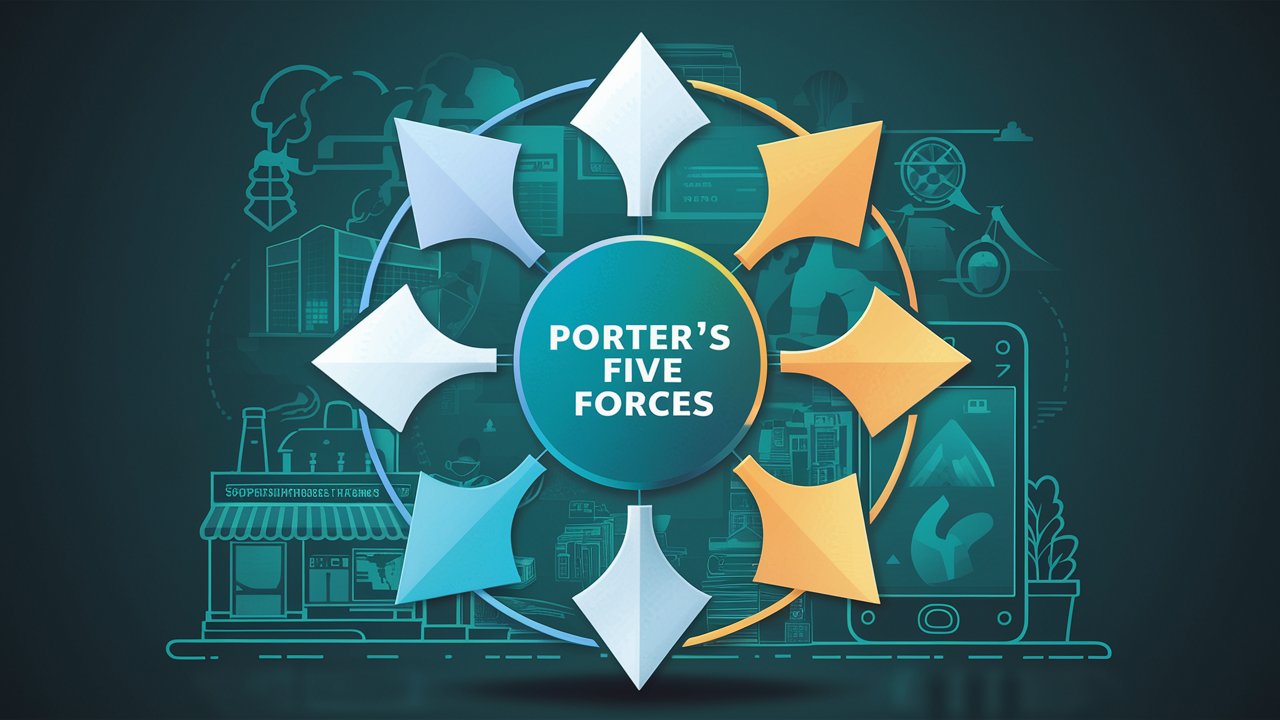Porter’s Five Forces model is a framework for analyzing the competitive forces in an industry and understanding its attractiveness and potential profitability. Developed by Michael E. Porter, this model identifies five key forces that shape every industry and market. Here's an overview of the model in simple terms:
The Five Forces:
- Threat of New Entrants:
- Description: This force examines how easy or difficult it is for new competitors to enter the industry.
- Factors: Barriers to entry (like high startup costs, regulations, strong brand loyalty of existing players), economies of scale, and access to distribution channels.
- Impact: High threat means more competition, which can drive down prices and profits.
- Bargaining Power of Suppliers:
- Description: This force looks at the power suppliers have over the price and quality of the materials they provide.
- Factors: Number of suppliers, uniqueness of their products or services, and the cost of switching suppliers.
- Impact: High supplier power can increase costs for companies in the industry.
- Bargaining Power of Buyers:
- Description: This force examines the power customers have to drive prices down or demand higher quality.
- Factors: Number of buyers, importance of each buyer to the business, and the cost to the buyer of switching to a different product.
- Impact: High buyer power can force companies to lower prices or improve product offerings.
- Threat of Substitute Products or Services:
- Description: This force considers the likelihood of customers finding a different way of doing what you do.
- Factors: Availability of substitute products, the performance of substitutes, and the cost of switching to a substitute.
- Impact: High threat of substitutes can reduce industry profitability as customers may opt for alternatives.
- Industry Rivalry:
- Description: This force looks at the intensity of competition among existing competitors in the market.
- Factors: Number of competitors, rate of industry growth, and product differentiation.
- Impact: High rivalry can lead to price wars, advertising battles, and the need for continuous innovation, all of which can reduce profitability.
Example:
Imagine you're analyzing the soft drink industry using Porter's Five Forces:
- Threat of New Entrants: The threat might be low because major brands like Coca-Cola and Pepsi have strong brand loyalty, and new entrants would need significant investment.
- Bargaining Power of Suppliers: If there are many suppliers of sugar and water, the bargaining power is low. But if there’s a unique ingredient only a few can provide, their power increases.
- Bargaining Power of Buyers: Large retailers buying in bulk can have significant power over soft drink companies, demanding lower prices.
- Threat of Substitutes: High, as consumers can choose juices, bottled water, or other beverages instead of soft drinks.
- Industry Rivalry: Very high, with major players constantly competing through advertising, product innovation, and price promotions.

